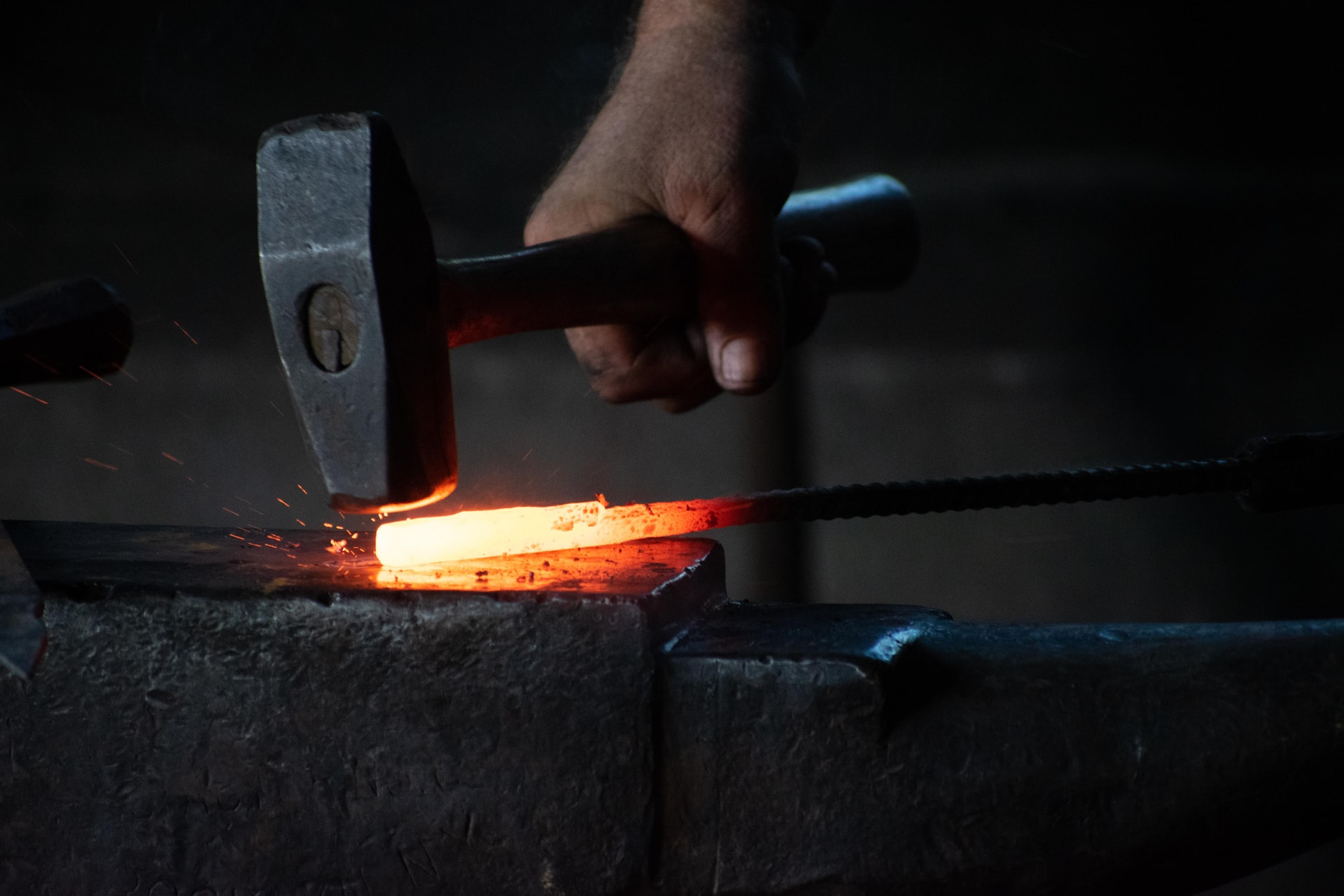
Travel Writer Charis Gambon takes us through an experience of sword making at Oldfield Forge, highlighting the level of trust the collaborative process entails
Oldfield Forge offers you an experience that feels pulled straight out of history – forging a sword. This process takes two days and two people, along with the expertise of the forge’s instructors. Every step is completed by hand tools, with the exception of the final grind of the blade which reveals the fruits of your labour as the blackened steel shimmers into a silver. The final assembly is completed when you can proudly hold a creation that you have made with two days of hard work.
The final assembly is completed when you can proudly hold a creation that you have made with two days of hard work
Starting with the blade, you shape a tang that will be seated inside the grip, gaining your first understanding of the heating of steel and how much pressure it takes to move it into shape. Realising how the process of forging works, you will have to trust your partner immensely, as one of you directs the shaping of the steel while the other uses a larger two-handed hammer to pound the metal with more force. The two of you will need to communicate largely nonverbally, using dings of the hammer on the anvil to signify hits following the leader, or to stop and allow solo work. A great degree of trust is needed to ensure the correct timing of the hammers is accurate and safe.
When using the forge your metal pieces need to be glowing orange as that means they will be easier to shape. If they are cherry red, more energy will be required to shape the metal, and as a result it will take you longer. If the pieces get too hot they will begin to spark and will snap in half, as we found out during our forging experience.
Oldfield Forge encourages creativity, as different parts of the sword demand varying levels of customisation. Pommels are the least customisable element, with the guard being the most. Blades are largely simple, but still hold customisation. This, of course, only applies to one type of sword, there being other options for flamberge blades, simple sabres, cutlasses, and more historically accurate swords, as well daggers, high-carbon house knives, and utility tools such as s-hooks, and candlesticks.
The instructors at the forge do not regard themselves as teachers, but as guides, helping you to create what you want to make. They offer humour as friends would, and can help to rescue your projects when things go awry, keeping you on track and motivated to make a piece you can be genuinely proud of.
No two creations will ever be the same; the individuality and the personality of the makers will show through in the final piece. Oldfield Forge is a place to visit, and the experience is one that will last a lifetime, through nurturing skills that you never knew you had, building trust, and creating wonderful memories between the forge pair. In our time at Oldfield, we saw lovers who had been together for no time at all, couples that had been married for decades, parents with their children, and friends looking for an adventurous experience together, and all of them left with pride holding something they had made together.
For more Travel articles, take a look at these:
Paris: Is it Really the City of Love?
Comments